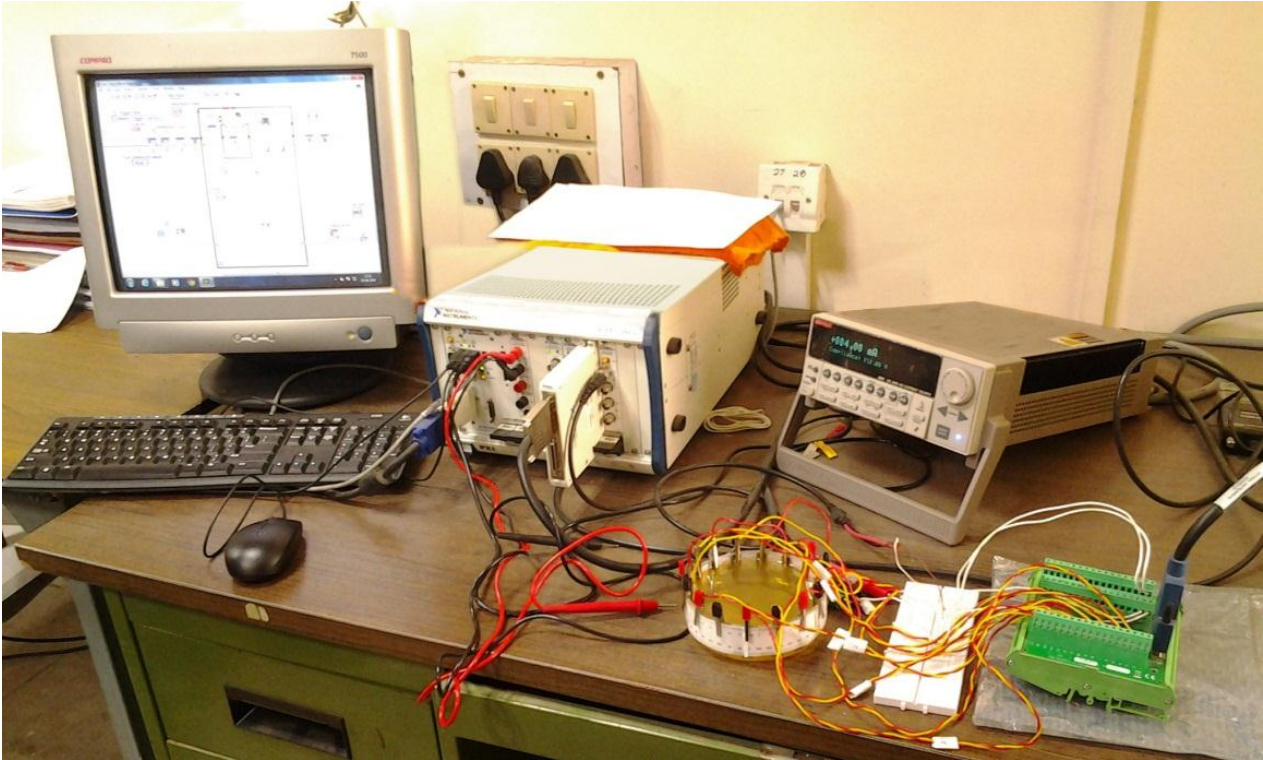Tomographic Imaging Lab
What Interests Us ?
Our work is mainly to develop and analyse solutions to quantitative imaging problems appearing in biomedical, remote sensing, battle field surveillance and tracking domains.
Tomographic imaging is the science of "reconstructing" ("seeing" inside) a body/surface, without cutting it open. This is typically done by obtaining data reflecting the interaction of the object of interest with suitable stimulation (radiations such as X-ray, optical,
microwave, or currents and voltages), and then mathematically/computationally "inverting" that data to quantitatively characterize the object's property of interest. The computational aspect of this extremely applicable science is a unique mix of mathematical modelling and signal
processing.
Among the most visible examples of this science are the CT and MRI scanners in hospitals. The need to quantitatively image objects of interest from indirect data arises in several applications of sub/behind-surface investigations in biomedical engineering, remote sensing, geophysical prospecting,
humanitarian de-mining, archaeology, battlefield-surveillance and nondestructive evaluation, to name only a few.
We work out the consolidated tomographic reconstruction process which includes typical mathematical models used, deterministic and stochastic inversion methodologies, and concepts of approximate tomography for limited data settings.
Various modalities of subsurface, biomedical, remote-sensing and battlefield imaging are being worked on in the frameworks developed.
Our research in tomography broadly requires us to have a grasp of a combination of root areas mainly computational signal processing and electromagnetics. This in-turn needs a good interest in basic areas such as
numerical linear algebra, optimisation, computational electromagnetics (or simply numerical solutions of PDEs/integro-differential-equations), signal processing and estimation.
There are no "departmental" boundaries here; inverse problems are perhaps among the most multidisciplinary and applicable areas today. We ourselves have members and collaborators from departments ranging across
all shades of engineering, physics, mathematics, right up to medical doctors.
Sponsored Research Projects
- (ISRO): Model based tomographic subsurface soil characterization; 25.7.2012-25.9.2014; PI: Dr Naren Naik; Amount: Rs 9, 68400 /-).
- (BRNS) : Shape-based fluorescence optical tomography for grading of dysplasia in cervical cancer progression (10.9.2013-9.9.2018; PI: Dr Naren Naik, co-PI: Dr Asima Pradhan; Amount: Rs 47,78,750/-).
- (ISRO): RTE tomography based cloud monitoring (31.8.2016 till date; PI: Dr Naren Naik, Amount: Rs 13, 02, 000/-). Phase-2 of this project positively reviewed; awaiting grant release and notification.
- (IMPRINT: 7535): Continuous discharge measurement in amall open channels by using ultrasonic tomography; (Ongoing; PI: Dr Shivam Tripathi, Co-PIs: Dr Naren Naik, Prof PrabhatMunshi; Amount: Rs 68,42,000/-).
Institute Grant Project
-
Electrical Impedance Tomography Data Collection Set-up
The equipment is basic to electrical impedance tomography which is useful in many areas of medical imaging, mine detection and nondestructive evaluation, and it can also be used in multimodal imaging applications. This equipment serves as a very useful aid in research, instruction and motivation for students taking theses and courses on tomographic imaging. It is the first in the institute on impedance imaging.

Designed by Mr. Vishal Saxena (Retired Research Engineer, IIT Kanpur) and implemented at Tomographic Imaging lab, Electrical Engineering Department, IIT Kanpur
Sponsored Discontinued Project
-
Science and technology of water harvesting and management in the medieval fort of Kalinjar in central
India.
(01.04.2014 - 31.03.2019; PI: Dr Shivam Tripathi (CE), co-PIs: Dr Naren Naik (EE), Dr Javed Malik (CE), Dr Bhuvan
Vikrama (ASI)); Part of MHRD project SANDHI from IIT-K.
The proposal aims to investigate and understand science and technology of water harvesting and management in medieval forts of Central India. The goal of this study is to find answers for some fundamental questions on this issue such as role of hydrology in selection of fort sites, design and maintenance mechanisms of surface and sub-surface water harvesting bodies, among others. We propose to answer these questions by carrying out a detailed hydrological investigation of Kalinjar fort, a representative medieval fort of Central India.